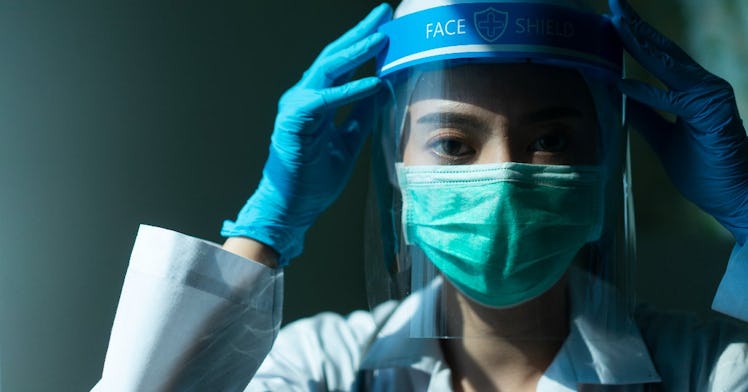What Is Flurona and Do You Need to Worry About It?
Flurona occurs when you get COVID and the flu at the same time, and it can make treatment more difficult.

Because nothing can be simple these days, it’s not just COVID we have to worry about, and it’s not just the flu we have to worry about. We also have to worry about their weird, hybrid lovechild: flurona.
So what is flurona? It’s not actually a distinct infection. Instead, it occurs when the stars align and you contract the flu and COVID simultaneously. And by all accounts, it’s pretty awful.
According to Atlanta-based ER doctor Darria Long Gillespie, M.D., flurona is more officially called a co-infection, and it’s been around since the start of the COVID-19 pandemic. It’s “not new — while [co-infections are] more rare (simply because you have to catch both at the same time), we have seen co-infection since the beginning,” Gillespie told Fatherly.
During the 2020-2021 flu season, when everyone was still hunkered down, washing their hands, avoiding crowds, and generally doing everything they could to stay safe from COVID, flu numbers were dramatically lower than in typical years. This year, however, the highly contagious nature of the omicron variant coupled with a more laissez-faire attitude toward masking, social distancing, and avoiding anything that could possibly be a COVID vector, we can expect not only a more pronounced flu season than last year but also a potential glut of flurona cases.
“Having a co-infection is sort of like being hit by two cars at the same time,” Gillespie says. “It increases your risk for injury. Co-infection not only can increase the risk of complications, it can make treating the condition more difficult since what works for COVID can sometimes prolong healing in other conditions.”
But parents shouldn’t be more concerned about flurona than they are about either COVID or the flu alone, Gillespie says. They should just do what they can to protect their kids from both.
How To Avoid Getting Flurona
Since flurona is caused by two distinct viruses, not one totally new monster, the best bet for protection is existing vaccines — for both flu and COVID. We already have the tools to fight this illness. We just need to make sure we use them.
Neither the COVID vaccine nor the flu vaccine completely erases the chance of infection, but they do significantly lower it. Even more importantly, they reduce the risk of severe illness, Gillespie says. “The best thing you can do is vaccination against the flu and COVID.”
As far as other ways to protect yourself and your family from this particular portmanteau? Keep up good lifestyle and hygiene practices.
“The good thing is that all of the steps we take to reduce the risk of COVID also reduce the risk of flu,” Gillespie says. “Don’t forget the importance of overall fortifying our health. In addition to vaccine and hand-washing, eating a healthy diet rich in vitamin C, D, and zinc; getting outdoor air and physical activity; and taking care of ourselves gives our immune system the best fighting chance!”